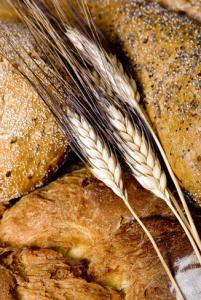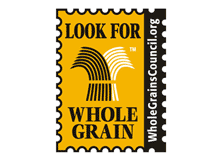 Demystifying Cholesterol and Whole Grains
by Sheryl Norman,
It’s not just coincidence that September is Cholesterol Awareness Month and Whole GrainsMonth. Cholesterol levels can be managed in manyways, and key among them is eating whole grain foods. The Good, the Bad: Cholesterol
Cholesterol is a waxy substance found in the fats in our blood. Our bodies need cholesterol to build healthy cells, but having high cholesterol can increase the risk of heart disease or stroke. Everyone has good and bad cholesterol. “Bad cholesterol,” LDL, can clog arteries and increase the risk of a heart attack or stroke. “Good cholesterol,” HDL, takes “bad cholesterol” out of the bloodstream. High cholesterol risk factors include: Smoking, obesity, poor diet, lack of exercise, high blood pressure, diabetes and a family history of heart disease. However, the condition has no outright symptoms. A blood test is the only way to detect high cholesterol. It can also be inherited, but is often treatable. Lifestyle changes are your best fi rst line of defense against high cholesterol. Medication may also be necessary; check with your physician or health care provider to be sure. According to Peter H. Gott, M.D., diet is the cheapest, safest and most reasonable first step to lowering cholesterol levels. And according to the Mayo Clinic, a diet low in saturated fat—high in fiber, fruits and vegetables—may help lower cholesterol as much as statin medications for some people.
Demystifying Cholesterol and Whole Grains
by Sheryl Norman,
It’s not just coincidence that September is Cholesterol Awareness Month and Whole GrainsMonth. Cholesterol levels can be managed in manyways, and key among them is eating whole grain foods. The Good, the Bad: Cholesterol
Cholesterol is a waxy substance found in the fats in our blood. Our bodies need cholesterol to build healthy cells, but having high cholesterol can increase the risk of heart disease or stroke. Everyone has good and bad cholesterol. “Bad cholesterol,” LDL, can clog arteries and increase the risk of a heart attack or stroke. “Good cholesterol,” HDL, takes “bad cholesterol” out of the bloodstream. High cholesterol risk factors include: Smoking, obesity, poor diet, lack of exercise, high blood pressure, diabetes and a family history of heart disease. However, the condition has no outright symptoms. A blood test is the only way to detect high cholesterol. It can also be inherited, but is often treatable. Lifestyle changes are your best fi rst line of defense against high cholesterol. Medication may also be necessary; check with your physician or health care provider to be sure. According to Peter H. Gott, M.D., diet is the cheapest, safest and most reasonable first step to lowering cholesterol levels. And according to the Mayo Clinic, a diet low in saturated fat—high in fiber, fruits and vegetables—may help lower cholesterol as much as statin medications for some people.
The Whole Story on Whole Grains
Health experts say that everyone—men, women, young, old—needs grains as part of a healthy everyday diet. And at least half of our daily grains should be “whole grains.” Contrary to popular belief, whole grains don’t taste like cardboard! Whole grains include wheat, corn, rice, oats, barley, quinoa, sorghum, spelt, rye—even popcorn! Whole grains contain disease-fighting phytochemicals and antioxidants, plus are a good source of protein, B vitamins, vitamin E, magnesium, iron and fiber. Eating whole grains helps to lower cholesterol levels, plus reduce the risk of heart disease, stroke, cancer, diabetes and obesity. Few foods offer such diverse benefits. This is why the most recent Dietary Guidelines for Americans recommend that all adults eat at least 3 to 5 servings of whole grains every day; children need 2 to 3 servings or more. Beyond buying whole grain breads, pastas and cereals, try these easy ways to enjoy whole grains: • Add a half-cup of cooked bulgur, wild rice or barley to bread stuffing • Enjoy whole grain salads like tabbouleh • Stir a handful of rolled oats into yogurt for a satisfying and healthy crunchWhat IS a Whole Grain and How Do I Find It?
All grains start life as whole grains. A whole grain is simply the whole seed (or kernel) of a plant, which includes three key parts: the bran, germ and endosperm. When grains are processed, the bran and germ are often removed. Without the bran and germ, about 25% of a grain’s protein is lost, along with at least 17 key nutrients. The Whole Grains Council has created the Whole Grain Stamp to help you find real whole grain products. Until the Whole Grain Stamp is used on all foods, check the package label. Look for words like “whole wheat,” “whole [other grain],” “stone-ground whole [grain],” “brown rice,” “oats, oatmeal” or “wheatberries.”


